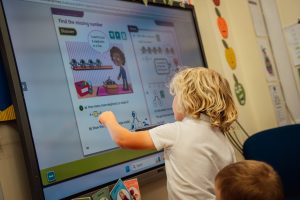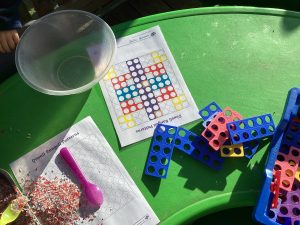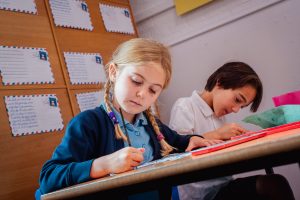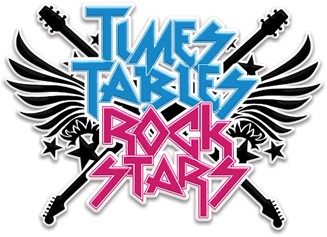At Arnesby, we follow the National Curriculum for Mathematics. We believe it is an essential life skill and our wish is that all children enjoy maths and become confident mathematicians who thrive on challenge.
The main areas in the program of study for mathematics are number, measure, geometry and statistics. There is a strong emphasis at Arnesby on number and using and applying new skills.
Power Maths is our new, exciting scheme which is used from Reception to Year 6. It is a whole class approach that aims to make learning fun and makes connections between concepts, allowing children to explore their learning and master new ideas with a deep understanding.
The program focuses on the key principles: to be fluent in the fundamentals of mathematics (i.e. quick recall number facts and application of knowledge, to reason mathematically (i.e. justify, generalise and explain why), and to problem solve.
Power Maths
What is Power Maths?
Power Maths is a resource that has been designed for UK schools based on research and extensive experience of teaching and learning around the world and here in the UK. It has been designed to support and challenge all pupils, and is built on the belief that EVERYONE can learn maths successfully.
How does this support our approach to teaching?
The philosophy behind Power Maths is that being successful in maths is not just about rote-learning procedures and methods, but is instead about problem solving, thinking and discussing. Many people feel they were taught maths in a way that was about memorising formulas and calculation methods, then having to apply them without any real understanding of what or how these methods actually work. Power Maths includes practice questions to help children develop fluent recall and develop their conceptual understanding. Power Maths uses growth mindset characters to prompt, encourage and question children. They spark curiosity, engage reasoning, secure understanding and deepen learning for all.
The Power Maths scheme allows children to make small steps to move through the following aspects of mathematical thinking:
Fluency – having number sense, understanding how numbers relate to each other, seeing how numbers can be split and put together in different ways and having knowledge of number facts and efficient methods to calculate.
Reasoning – thinking through mathematical problems logically and systematically and involves using and applying their mathematical knowledge to explain or justify a solution.
Problem Solving – drawing on problem solving skills such as working systematically, trial and improvement, logical reasoning and spotting and exploring patterns. Problems often have multiple solutions.
What if my child needs a confidence boost, or wants to be challenged further?
Power Maths is based on a ‘small-steps’ approach, sometimes called a mastery approach. This means that the concepts are broken down so that your child can master one idea without feeling over-whelmed. There are a range of fluency, reasoning and problem solving questions in each lesson that are designed to support the different needs and confidence levels within a class, while at the same time fostering a spirit of working and learning together. Each lesson includes a challenge question for those children who can delve deeper into a concept.
Calculation Policies
The links below show the Power Maths progression in calculation (addition, subtraction, multiplication and division) and how this works in line with the National Curriculum. The consistent use of the CPA (concrete, pictorial, abstract) approach across Power Maths helps children develop mastery across all the operations in an efficient and reliable way. This policy shows how these methods develop children’s confidence in their understanding of both written and mental methods.
Concrete, Pictorial, Abstract (CPA)
Concrete, Pictorial, Abstract (CPA) is a highly effective approach to teaching that develops a deep and sustainable understanding of maths in pupils. Often referred to as the concrete, representational, abstract framework, CPA was developed by American psychologist Jerome Bruner. It is an essential technique within the Singapore method of teaching maths for mastery.
- Concrete – students should have the opportunity to use concrete objects and manipulatives to help them understand what they are doing.
- Pictorial – students should then build on this concrete approach by using pictorial representations. These representations can then be used to reason and solve problems.
- Abstract – with the foundations firmly laid, students should be able to move to an abstract approach using numbers and key concepts with confidence.
Concrete
Concrete is the “doing” stage.
During this stage, students use concrete objects to model problems. This brings concepts to life by allowing children to experience and handle physical (concrete) objects. With the CPA framework, every abstract concept is first introduced using physical, interactive concrete materials. For example, if a problem involves adding pieces of fruit, children can first handle actual fruit. From there, they can progress to handling abstract counters or cubes which represent the fruit.
Pictorial
Pictorial is the “seeing” stage. Here, visual representations of concrete objects are used to model problems.
This stage encourages children to make a mental connection between the physical object they just handled and the abstract pictures, diagrams or models that represent the objects from the problem. Building or drawing a model makes it easier for children to grasp difficult abstract concepts (for example, fractions). Simply put, it helps students visualise abstract problems and make them more accessible. Bar modelling is an essential maths mastery pictorial strategy. A Singapore-style of maths model, bar modelling allows pupils to draw and visualize mathematical concepts to solve problems
Abstract
Abstract is the “symbolic” stage, where children use abstract symbols to model problems.
Students will not progress to this stage until they have demonstrated that they have a solid understanding of the concrete and pictorial stages of the problem. The abstract stage involves the teacher introducing abstract concepts (for example, mathematical symbols). Children are introduced to the concept at a symbolic level, using only numbers, notation, and mathematical symbols (for example, +, –, x, /) to indicate addition, multiplication or division.
Times Table Rockstars
When it comes to times tables, speed and accuracy are important – the more facts your child remembers, the easier it is for them to do harder calculations. Times Table Rock Stars (TTRS) is a fun and challenging programme designed to help students master the times tables! To be a Times Table Rock Star you need to answer any multiplication fact up to 12×12 in less than 3 seconds!
All children have a log in to use whenever they wish at home and we will also allow the children to access TTRS at school too. Encouraging your child to ‘play’ on TTRS will help their speed and accuracy with recalling times tables facts.




